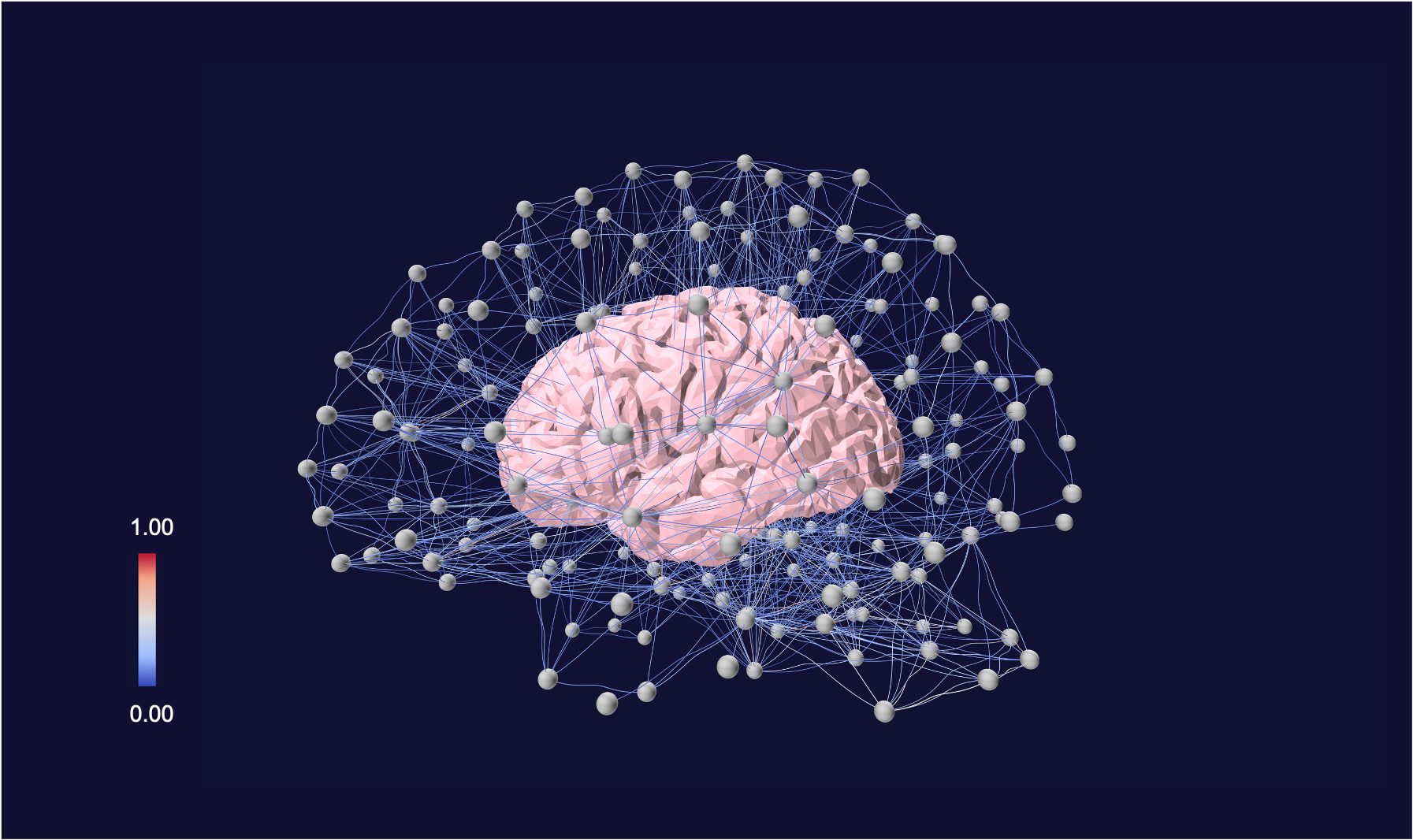Brain-computer interfaces: a multidisciplinary project team seeking to help people with paralysis
Date:
Changed on 14/02/2025

NERV is a new project team that was launched back on 1st October. A joint undertaking involving Inria, Sorbonne University, Inserm and the CNRS, located at the Paris Brain Institute (ICM), it was set up with the goal of improving the performance of brain computer interfaces (BCI), which enable people to control computers, artificial limbs and other automated systems using their thoughts.
“We currently have algorithms capable of detecting cortical signatures corresponding to individual tasks, such as imagining forming a fist, explique Fabrizio de Vico Fallani, head of the NERV team. But the level of precision is only 70 to 80%. When you're controlling a wheelchair and you want to cross the road, you can’t have any errors, which is why we’re seeking to get as close as possible to 100%.” Marie-Constance Corsi, researcher with the NERV team, adds: “15 to 30% of users are unable to control the tool, even after a lot of training. This can be down to the machine, or the individual. What we want to do is to identify markers which factor in the unique nature of people's brains.”
A new team would be needed to tackle such a vast project. This was made possible in large part through the ERC Consolidator Grant awarded to Fabrizio de Vico Fallani, providing two million euros’ worth of funding for a period of seven years. The Nerv project team has set up shop at the Institut du Cerveau (ICM), an Inria partner laboratory, and is very much in keeping with the joint research strategy the two institutes launched in 2021 aimed at developing computational neuroscience, neuro-engineering and data science.
Of course, interfaces and interdisciplinarity go hand-in-hand. The NERV team work with computer scientists, mathematicians, physicists and engineers, as well as neurologists, psychologists and physiotherapists, with a vibrant mix of researchers, PhD students, postdoctoral researchers and clinicians.
“The ICM provides a unique environment within Pitié-Salpêtrière Hospital, enabling us to interact with clinicians and to gather data on both healthy people and patients”, says Marie-Constance Corsi. NERV will seek to combine data analysis, mathematical modelling and experiments. “It’s a somewhat unusual environment for an Inria researcher as we’re surrounded by neuroscience”, says Fabrizio de Vico Fallani. “But 360° discussions are hugely beneficial: it’s like mathematicians are becoming neurologists, and vice versa.”
Seeking to improve BCIs from both a machine and a human perspective, the team will spend part of their time working on the data to be integrated into the algorithm and the rest of their time on the neuronal mechanisms specific to each individual. “With regard to the former, the performance levels of algorithms are not yet high enough as a result of the characteristics they look for”, says Fabrizio de Vico Fallani. “Instead of observing each region of the brain individually, it might make more sense to look to see how they activate together, viewing the brain as a network.”
The team will conduct an in-depth analysis of brain interactions using electroencephalography (EEG), magnetoencephalography (MEG) and new sensors which Marie-Constance Corsi has been working on since her PhD. The aim is to enhance the data available to algorithms, thereby improving their ability to understand people’s intentions.
The NERV team will then turn their attention to researching biomarkers for performance and learning, the goal being to be able to adapt the training strategy and programme to individual patients.
Verbatim
We showed in a 2020 study that when someone is learning how to use a BCI, their brain modifies the way in which the different regions of the brain communicate with each other. So if we train the algorithm using the starting characteristics, it won't work: you need data which tracks changes to performance levels.
Auteur
Poste
Researcher with NERV
Long-term, enhanced BCIs could have a significant impact on the lives of people with paralysis, including those recovering from stroke.
Verbatim
The brain can be highly flexible. For around a year after a stroke tasks which were previously carried out by the motor areas of the brain can be handled by other brain regions. But for most patients this isn't enough, and that’s where BCIs can be really useful in promoting brain rehabilitation.
Auteur
Poste
Head of the NERV team
What the researchers want to do is to identify the brain signals emitted when a patient imagines completing a particular movement, before then using the algorithm to get a muscle prosthetic to carry out the movement. In conjunction with transcranial magnetic stimulation this closed circuit will make it possible to reopen the “plasticity window” and complete functional rehabilitation, thereby increasing the chances of recovery. This experiment is set to be launched on 50 patients in 2024.
NERV is also focused on the technological development of BCIs, and has already developed Happyfeat, a software program designed to make life easier for clinicians looking to use them. “This software can be used to visualise, personalise and save certain settings in order to ensure the reproducibility of experiments”, explains Marie-Constance Corsi. An open-source version of Happyfeat is scheduled for release in 2024 for use by researchers, doctors and manufacturers of medical devices.
But the potential applications of the research carried out by NERV are not limited to neuroscience. The algorithms they have developed could be used in other disciplines involving the modelling of complex systems and networks, from energy and communications to the environment, public health and genetics. “We’re working on collaborations in some of these fields, but we haven’t lost sight of our overarching goal of improving BCIs”, concludes Fabrizio de Vico Fallani.
Titre
Verbatim
Working with NERV assists with the formulation of basic research questions with their roots in clinical issues, while making it easier to adapt technical solutions to patient needs. Our objective is to provide patients recovering from chronic stroke with more effective and personalised rehabilitation strategies, thereby improving their quality of life and their functional independence.
Auteur
Poste
Neurologist with NERV